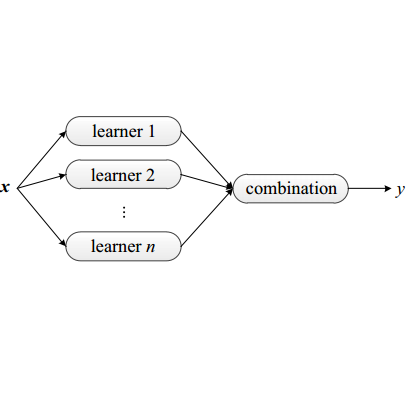Service robots are integrating more and more into our daily lives to help us with various tasks. In such environments, robots frequently face new objects while working in the environment and need to learn them in an open-ended fashion. Furthermore, such robots must be able to recognize a wide range of object categories. In this paper, we present a lifelong ensemble learning approach based on multiple representations to address the few-shot object recognition problem. In particular, we form ensemble methods based on deep representations and handcrafted 3D shape descriptors. To facilitate lifelong learning, each approach is equipped with a memory unit for storing and retrieving object information instantly. The proposed model is suitable for open-ended learning scenarios where the number of 3D object categories is not fixed and can grow over time. We have performed extensive sets of experiments to assess the performance of the proposed approach in offline, and open-ended scenarios. For the evaluation purpose, in addition to real object datasets, we generate a large synthetic household objects dataset consisting of 27000 views of 90 objects. Experimental results demonstrate the effectiveness of the proposed method on 3D object recognition tasks, as well as its superior performance over the state-of-the-art approaches. Additionally, we demonstrated the effectiveness of our approach in both simulated and real-robot settings, where the robot rapidly learned new categories from limited examples.
翻译:服务机器人越来越多地融入我们的日常生活,以帮助我们完成各种任务。在这种环境中,机器人常常在环境中工作时面对新的物体,需要以开放的方式学习这些物体。此外,这些机器人必须能够识别各种各样的物体类别。在本文中,我们根据多个表达方式提出终生共同学习方法,以解决微小物体识别问题。特别是,我们根据深层表达方式和手工制作的3D形状描述器形成共同方法。为了便利终生学习,每种方法都配备存储和检索对象信息的记忆单位。提议的模型适合于开放式学习情景,其中3D对象类别的数量没有固定,可以随着时间的推移而增长。我们进行了广泛的实验,以评估拟议方法在离线和开放情景中的表现。除了真实的物体数据集外,我们还制作了一个大型合成家用物体数据集,由对90个物体的27 000个视图组成。实验结果显示3D对象识别拟议方法在储存和立即检索对象信息方面的有效性。提议的模型适合于开放式学习情景,其中3D对象类别的数量没有固定,可以随着时间增长。我们进行了广泛的实验,用来评估拟议方法在离线外和开放的机器人中展示了我们所快速学习的两种方式的高度表现。




